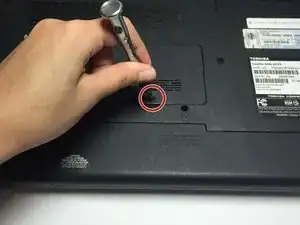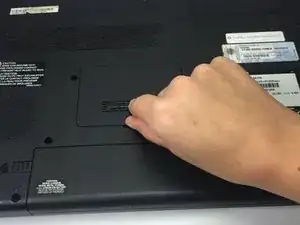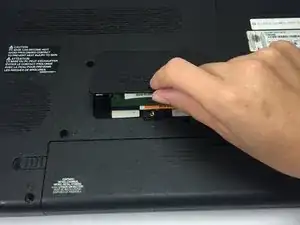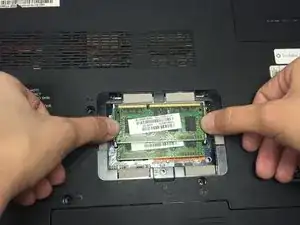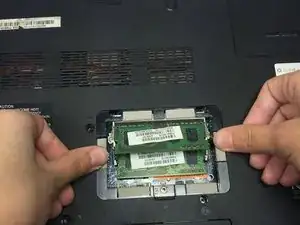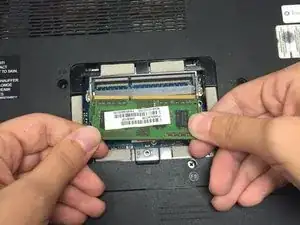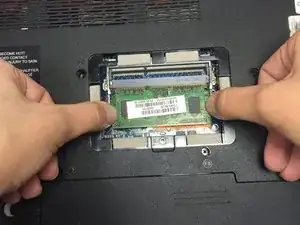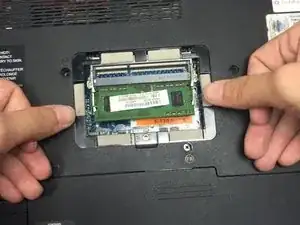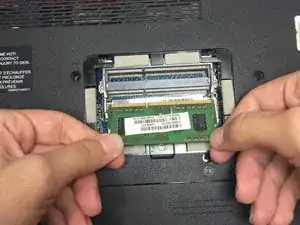Introduction
RAM--or Random Access Memory--stores your computer's temporary data, such as the various tabs that you have open on your internet browser while surfing the web. If you notice that your computer begins to run more and more slowly the longer you use it in one sitting, or if your computer displays blue error messages upon start-up, you may need to replace your RAM. Remember to treat your replacement RAM chips gently, and take care to hold them by their edges in order to avoid damage to the RAM chips due to the static electricity present in your fingers.
Tools
-
-
Turn your computer upside down so that the bottom of your laptop is facing up.
-
Using a Phillips head 0 screw driver, remove the 2mm Phillips head screw at the bottom edge of the RAM panel (located in the center of the bottom of the laptop) by rotating the screw counterclockwise.
-
-
-
Insert something thin, such as your fingernail or a credit card, into the slot at the bottom edge of the RAM panel.
-
Pull up with your hand until the cover of the RAM panel pops out of place and can be removed completely.
-
-
-
With your thumbs, press down on the small silver clamps on the left and right edges of the upper green RAM chip until the clamps release the chip.
-
-
-
Remove the upper RAM chip from its socket by gently gripping the left and right edges with your fingers and pulling the chip towards your body until it slides completely free of the computer.
-
-
-
With your thumbs, press down on the small silver clamps on the left and right edges of the lower green RAM chip until the clamps release the chip.
-
-
-
Remove the lower RAM chip from its socket by gently gripping the left and right edges with your fingers and pulling the chip towards your body until it slides completely free of the computer.
-
To reassemble your device, follow these instructions in reverse order.
